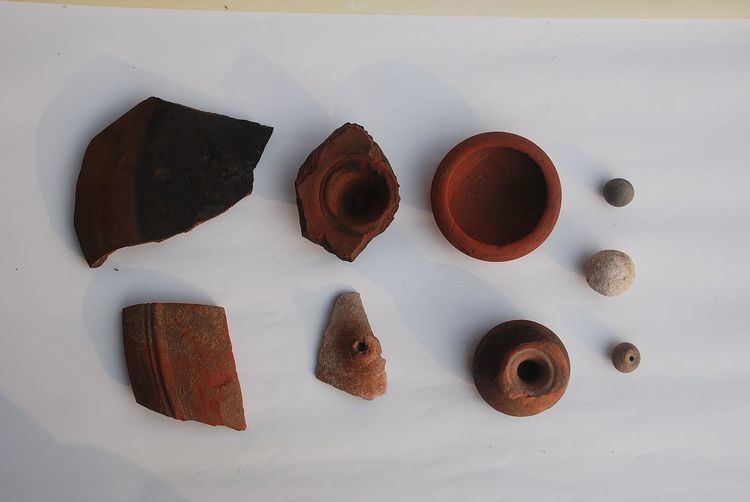Other name(s) Kasaunti river | ||
 | ||
Native name कृष्णावती नदी or कसौंती नदी Main source Discharge Location:Sahibi River in Haryana | ||
The Krishnavati river (Hindi: कृष्णावती नदी), also called Kasaunti (Hindi: कसौंती नदी), is a rain-fed river originates from Aravalli Range from Alwar district and Sikar district of Rajasthan to Rewari district of Haryana and is a tributary of Sahibi River. This river along with many other rivers from Aravalis made Sahibi River or Drishadwati river as the most voluminous tributory of Saraswati river.
Contents
Basin
The drainage pattern is dendritic.
Indus Valley Civilisation archaeological findings
Archaeological findings on the Sahibi River have confirmed habitations on its banks before the Harappan and pre-Mahabharata periods. Both handmade and wheel-made earthernware dated from 3309–2709 BCE and 2879–2384 BCE has been found on the banks of the Sahibi River at Jodhpura. INTACH-Rewari found pottery on the Sahibi riverbed at Hansaka in the Rewari district. A red stone statue of Vamana Dev was found in the Sahibi riverbed near Bawal in 2002; the statue is now displayed at the Shri Krishna Museum, Kurukshetra. Other artifacts discovered in the Sahibi River include arrowheads, fishhooks, appearheads, awls, and chisels.
Identification with Vedic rivers
Several modern scholars identify the old Ghaggar-Hakra River (of which Tangri river is a tributary) as the Sarasvati river and the Sahibi River with the Drishadvati river of Vedic period, on the banks of which Indus-Sarasvati civilisation developed. such scholars include Bhargava The Drishadwati River formed one border of the Vedic state of Brahmavarta and was mentioned in the Rigveda, the Manusmriti, and the Brahmin Granths texts.
